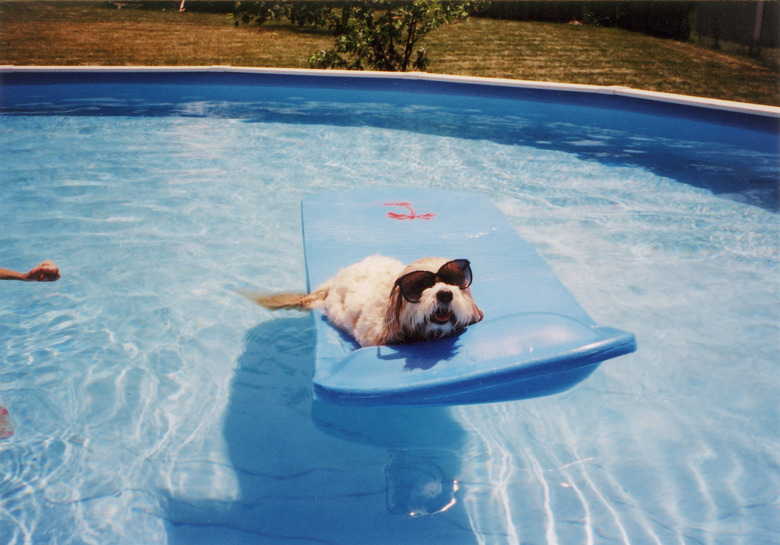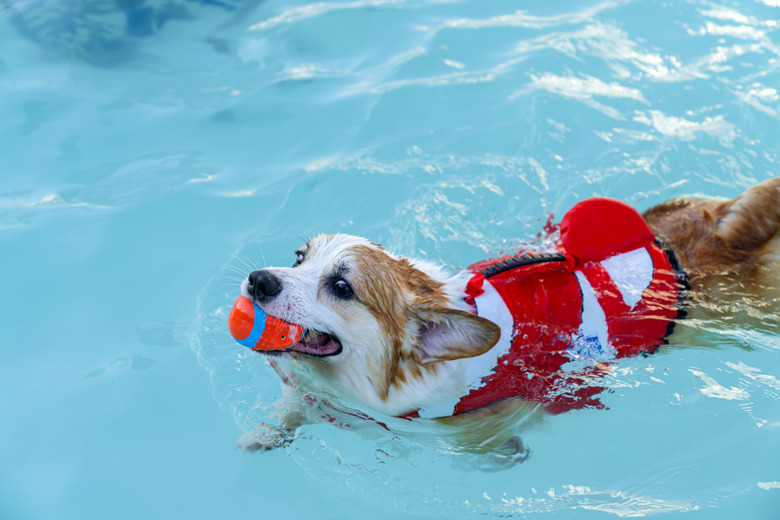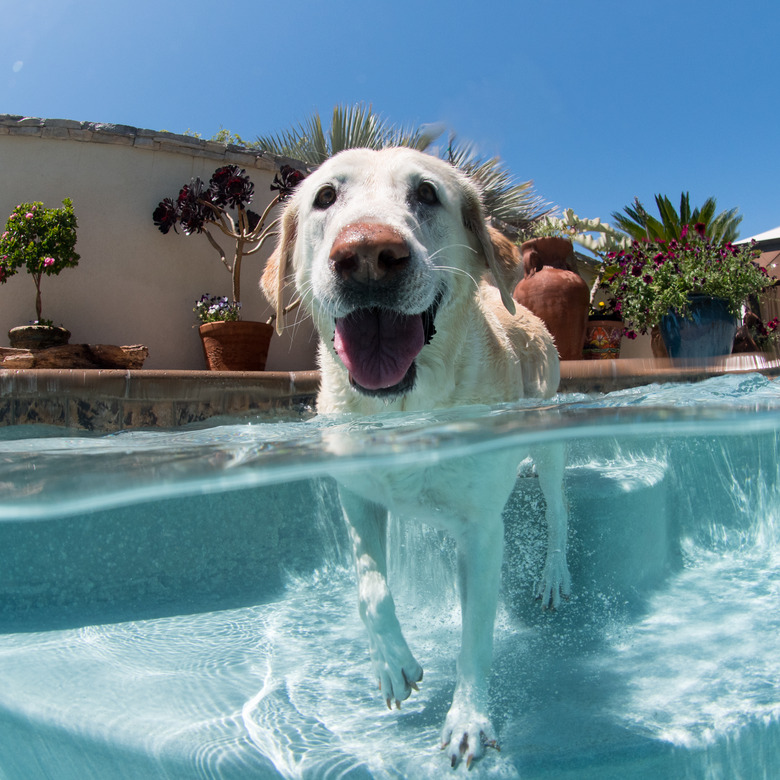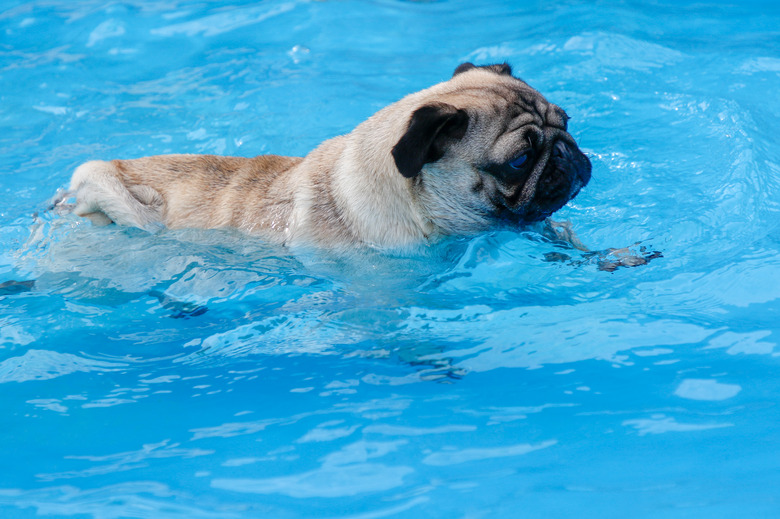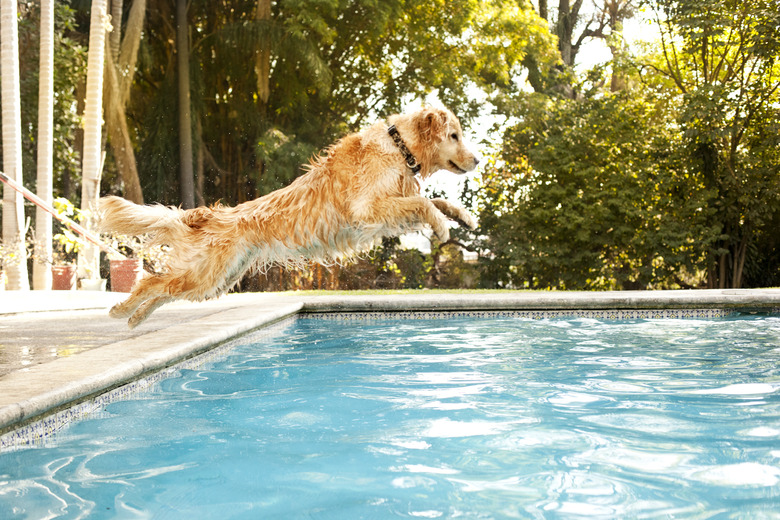The 4 Most Important Tips For Keeping Your Dog Safe Around The Pool, From A Certified Dog Trainer
When the weather gets hot, spending time in a pool with your dog is a great way to cool off. Pools can be a fantastic place for dogs to swim because they are clean, and don't have any of the unknowns of natural water like ocean waves, and swift currents in fresh water rivers. But of course, there are pool safety tips to keep in mind to help prevent your dog from getting injured in the water. Here are our top tips!
1. Always supervise your dog
1. Always supervise your dog
Dogs should never be able to access pools or the pool area unless supervised. To ensure your dog's safety, make sure that there is secure pool fence around the pool so that your dog can't climb or jump. You can also utilize a pool cover, and install pool alarms that will alert you if the pool's water is disturbed to keep your dog safe.
Essentially, any of the safety precautions a pool owner might put into place to keep a toddler or young child away from a pool and reduce the risk of drowning are appropriate to have in place to keep dogs away from the pools unless supervised and invited in. Although pools are safe for dogs to swim in, they shouldn't drink pool water. A small amount of water should be fine, but in large quantities, pool water can make dogs sick.
If your dog is warm and trying to drink the water, remove your dog from the pool area and provide them with clean, fresh water to drink, then go back to the pool.
2. Teach your dog to swim
2. Teach your dog to swim
Many, though not all dogs, love to swim, and are natural swimmers. and a pool is a great way to provide your dog with exercise and enrichment in the water.
To teach your dog to swim utilize positive reinforcement training approaches. Use treats, floating toys, and praise to encourage your dog to play in the water and show them how fun pools can be. Spend time teaching your dog to swim in the shallow end of the pool. Don't ever push your dog into deeper water than they are comfortable with.
While your dog is getting used to swimming in the pool, it's a good idea for them to wear a life jacket. Properly fitted dog life vests help keep your dog's face above water and prevent drawing. Life jackets can help increase your dog's comfort when in the water, and especially for young puppies and senior dogs can help prevent your dog from becoming exhausted in the water. Dog breeds with flat faces like pugs, bulldogs should always wear a lifejacket when they are in or near the water as they physically aren't able to swim safely. Even for strong swimmers, a dog life vest can help prevent dogs from getting overly tired in the water.
If you have an in-ground pool, it's important for you to show your dog where the shallow end and the pool steps are so your dog can get safely in and out of the pool as most dogs can't climb up over the edge of the pool. With above-ground pools, you may need to make modifications. Most dogs can't can't safely negotiate pool ladders, so you'll need to build or purchase pool platforms or dog pool ramps to allow your dog to get in and out. This is essential so that your dog can safely get in and out of the pool. Other pool toys like rafts and other flotation toys can be fun for dogs but should only be utilized under supervision to prevent your dog from becoming tangled or trapped in the toy.
Alternatively, consider investing in swimming lessons
You can teach your dog to swim by yourself in your backyard pool, but if you're feeling stuck, it can be useful to invest in professional swimming lessons for your dog. Some water-based dog training facilities like dock diving pools, as well as veterinary physical therapy locations often offer private dog swim lessons for dogs and puppies. Teaching your dog to be strong and confident in your swimming pool can allow you and your dog to have more fun in the water together.
3. Keep pool water clean
3. Keep pool water clean
If your dog has a small baby pool, it's important to change the water regularly and clean out the pool. However, if you have a larger above-ground or in-ground pool, full water changes aren't practical. Larger pools are kept germ free with chlorine. Chlorine is generally safe for dogs, and not properly chlorinating your pool can lead to an overgrowth of algae and/or bacteria.
4. Wash or rinse your dog off after swimming
4. Wash or rinse your dog off after swimming
Although pool chlorine is safe for dogs, it can dull or damage your dog's fur. Because of this, some dog owners prefer to rinse chlorine off their dog's fur after a swim in a pool.
You'll also want to clean your dog's ears after swimming to help prevent ear infections from being in the water. Another option some dog owners with pools investigate is converting their traditional chlorine pools into saltwater pools which can be less harsh on a dog's fur and skin. Pool chemicals diluted appropriately into pool water are safe, the pool chemicals themselves to treat pools are toxic and should always be kept away from dogs. Like other cleaning supplies, keep all pool chlorine locked away in cabinets or other areas where the dogs can't access.
The bottom line
The bottom line
Pools can be a great source of summer fun for you and your dog. Just keep in mind 4 simple tips: always supervise pool playtime, teach your dog to swim, keep the pool water clean, and rinse your dog off after they've been in the pool. Happy swimming!

